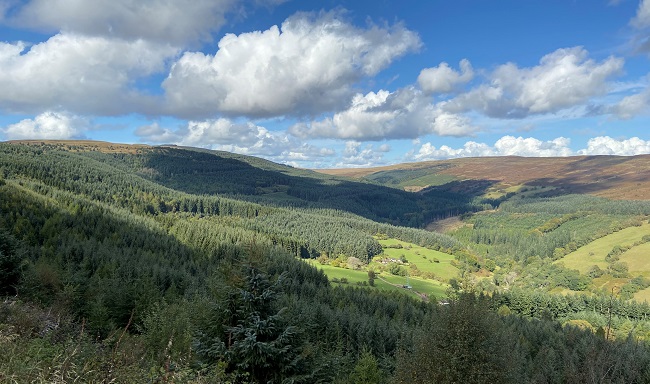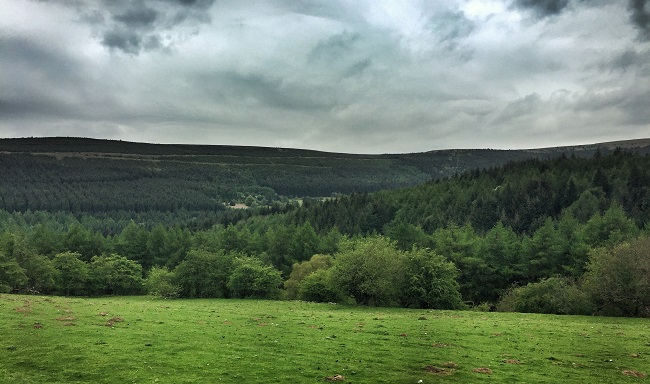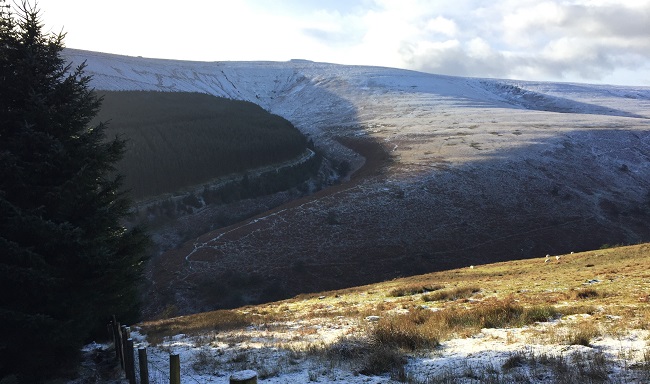Mynydd Du & Llanthony Forest Resource Plan
Overview
Natural Resources Wales is responsible for the sustainable management of the publicly owned woodlands and forests of Wales. They are managed for the benefit and well-being of the people who visit them and depend on them for their livelihood. This responsibility includes improving their biodiversity and long-term resilience to climate change so that future generations will also be able to enjoy the benefits they provide. Every ten years Natural Resources Wales reviews the long-term management plans for each forest area. These are compiled in a new Forest Resource Plan.
The Mynydd Du & Llanthony forest resource plan amounts to 1,262 hectares situated to the North East of Crickhowell in the heart of the Black Mountains.
The plan area incorporates two distinct woodland blocks. The main Mynydd Du Forest area fills both sides of the Grwyne Fawr valley, running from sheltered riparian woodland along the valley bottom, to the high hill ground at over 700 metres on its western flank. Llanthony Woods lie in an adjacent valley to the east and comprises a diverse chain of old estate woodlands, running along the western slopes of the very scenic Vale of Ewyas.
Though straddling the Powys-Monmouthshire county line, all the woodland area within this forest resource plan (FRP) lies within the Brecon Beacons National Park planning authority.



Below is a link to the summary of objectives for the plan followed by the indicative maps for the forest resource plan:
Mynydd Du & Llanthony Summary of Objectives
The following document helps to explain some of the categories shown on the maps below:
Mynydd Du Map 1: Long Term Primary Objectives
Mynydd Du Map 2: Forest Management Systems
Mynydd Du Map 3: Indicative Forest Types
Llanthony Map 1: Long Term Primary Objectives
Llanthony Map 2: Forest Management Systems
Llanthony Map 3: Indicative Forest Types
Summary of the main changes that will occur in the forest:
- Mynydd Du will remain an important productive woodland, providing a sustainable supply of timber to support employment and the Welsh economy.
- Species and structural diversity will be significantly enhanced, providing greater resilience to pests, disease and climate change.
- The expansion of a broadleaf corridor along the lower Grwyne Fawr valley and restocking of ‘mid-slopes’ with a more diverse mixture of productive species, will see a progressive reduction in the proportion of Sitka spruce.
- The restoration of ancient woodland sites will see all of Llanthony, and parts of the lower valley of Mynydd Du, undergo a steady conversion back to native broadleaf woodland.
- An incremental ‘Low Impact Silvicultural System’ (LISS) approach will be favoured for restoration of ancient woodland areas and parts of the productive crop where constraints allow, bringing 258ha (21%) of the woodland under continuous cover management.
- Riparian corridors and successional woodland buffers will be expanded and managed to ensure the condition of higher conservation value features and surrounding designated sites are protected and enhanced, and to improve connectivity between habitats.
- In Mynydd Du, some of the taller conifer stands adjacent to the county road, that cannot be safely managed under ‘LISS’, will be felled and restocked with native broadleaves.
- The remaining larch crops will be removed over the plan period, due to the presence of Phytophthora ramorum in the area.
- Other aspects of the woodland’s management, such as the provision of healthy access opportunities for the community and the identification and preservation of heritage features within the forest will remain important objectives.
Why your views matter
We would like to know your opinion and views on the new plans for Mynydd Du & Llanthony forest so it can help us improve its long-term management.
Areas
- Crickhowell
Audiences
- Management
Interests
- Forest Management

Share
Share on Twitter Share on Facebook